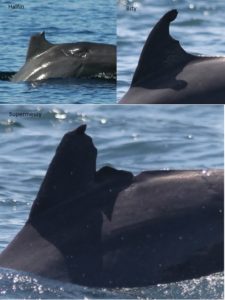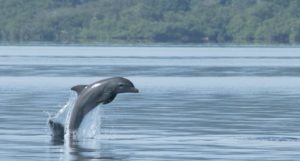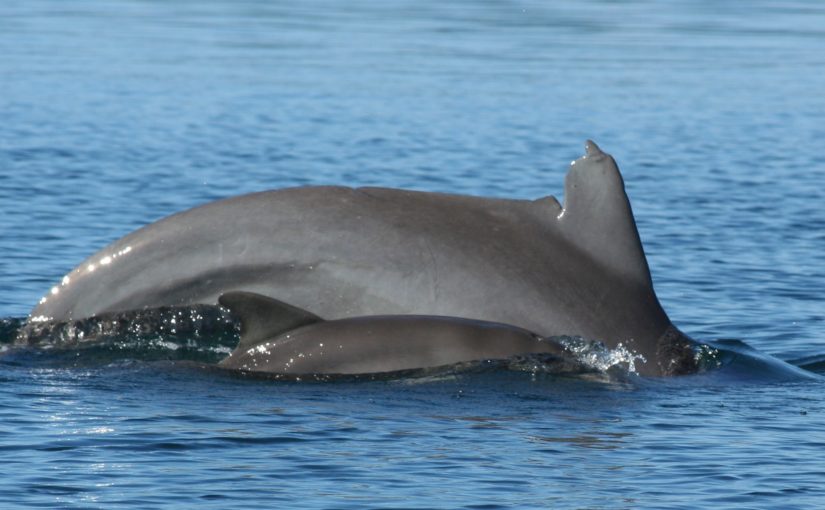Bottlenose dolphins live in complex fission-fusion societies, where animals associate with different individuals in a fluid manner. The strength of these associations varies across groups and over time. In a society such this, individuals play various roles in maintaining the integrity of the overall
social structure of a population. The consequences of the loss of an individual (through natural mortality or boat-strikes) will depend on the role that that individual play in a group. Network theory has been recently introduced to the study of sociality in non-human systems, like cetaceans. Erin will be working on the social structure of bottlenose dolphins using photo-id data. The goal is to enhance understanding of social dynamics at the individual level in the population of Bocas del Toro
by Erin Powell
My research is focused on the social structure of the population of bottlenose dolphins living in Bocas del Toro Panama. Right now I am working with other students in the class to identify the dolphins from photos taken of their dorsal fins in 2014. Then I will use that data as well as data from the previous ten years to analyze the social structure using SOCPROG. I don’t know how to use SOCPROG yet though, so I’m just going to talk about the photoID experience.
There are five of us that are using the photoID data in our research, so we all work together when identifying them. Two or more of us will meet three to four times a week for about two hours and go through the photos and identify them. It can be challenging to find a time that works for all of us, luckily we all hold each other very accountable.
We look mainly for the placement, size, and number of notches they have on the back of their fins. We use two catalogs of identified dolphins in Bocas del Toro to match them. If we can’t figure out which dolphin it is, we either put it down as Unknown. Later we will go back through to try to identify them, and if we can’t we say it is a new dolphin and give it a name.
 A challenge we have faced is it turns out most dolphins have similar dorsal fins. With the exception of a some very unique fins (we love you Bity, SuperMessy, and Halfin), it can take us a long time to identify each picture. In addition some of the pictures aren’t the best quality so it is difficult to see the smaller notches, and sometimes the dolphin is at an angle that makes it look different. This leads to a lot of unknowns, and a lot of heated arguments. It is incredibly frustrating when the fin looks easy to identify, then ten minutes and a little yelling later we have to mark it as unknown.
A challenge we have faced is it turns out most dolphins have similar dorsal fins. With the exception of a some very unique fins (we love you Bity, SuperMessy, and Halfin), it can take us a long time to identify each picture. In addition some of the pictures aren’t the best quality so it is difficult to see the smaller notches, and sometimes the dolphin is at an angle that makes it look different. This leads to a lot of unknowns, and a lot of heated arguments. It is incredibly frustrating when the fin looks easy to identify, then ten minutes and a little yelling later we have to mark it as unknown.
Despite our struggles, we have gotten a lot better at identifying them. The first few days were very rough, but now we are all familiar with them and have our favorites (RIP Zig-Zag), so we can move through them quicker. I’m hoping that we can get through all the photos we planned to by the beginning of November, so I can move onto figuring out how SOCPROG works.

